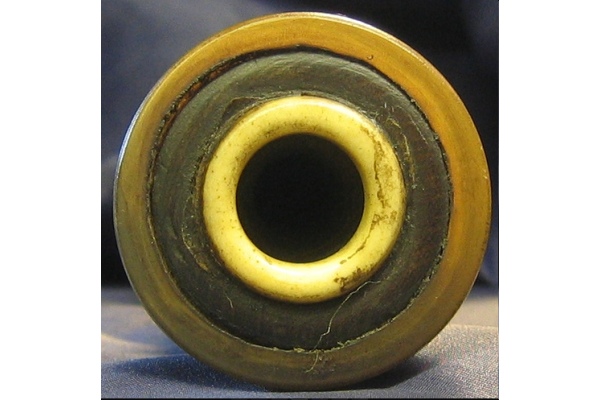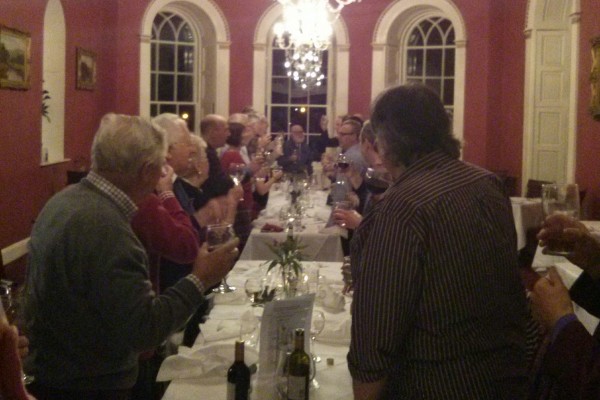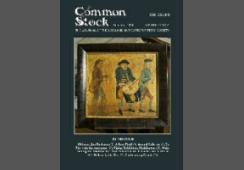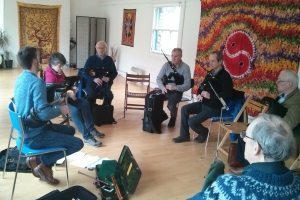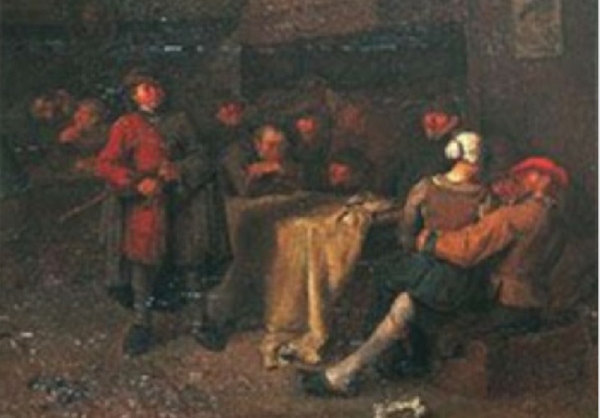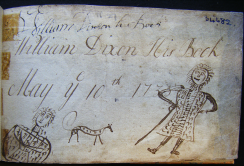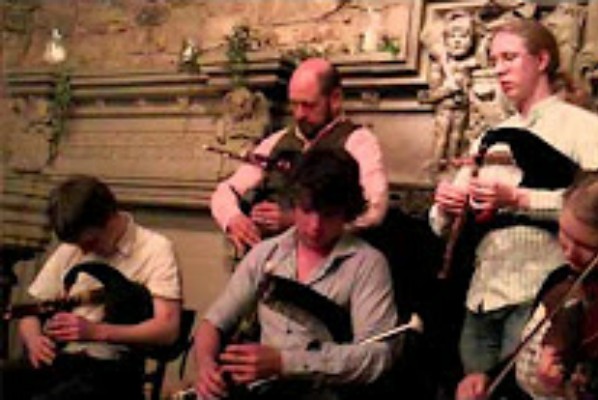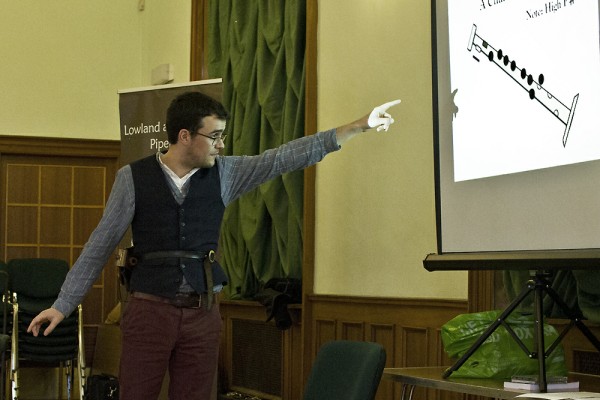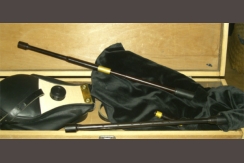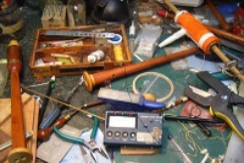Pete Stewart reviews the misleading history of a tune
Smallpipers have been familiar with a tune with a similar title to this since Hamish Moore recorded a version in the early years of the Society, a version which was subsequently published in the LBPS Blue session book.

The tune as published in the LBPS ‘Blue’ book
In this printed setting the tune is ascribed to ‘Gow arr. H. Moore’. Pencaitland is a small village in East Lothian, about 12 miles east of Edinburgh. I first became interested in this tune when I moved here in 1992, since I found myselfquite by chance, living in the grounds of Winton House, the ‘Big Hoose’ of the village. However, there are very significant differences between the version I first heard played by the village’s fiddle-maker and this one. I have subsequently pondered occasionally how this came about. I was prompted to do so again very recently when Gordon Mooney announced the release of a new digital album by posting on the LBPS Facebook page his arrangement of the tune for smallpipes and whistle. This led me to seek out again the version and that originally published by Neil Gow. It first appeared in his ‘Third Collection of Strathspey Reels &c’, where it is ascribed to Nath. Gow.

This is so significantly different to the LBPs published version that one has to wonder how it came about; in fact, it only took a little searching (something which in 1992 was not so easily done) to locate a version much closer to it. It comes in William Ross’ 10th Book, where it has a new version of the title.

The LBPS published version, then, and presumably that of Mr Moore, is very closely derived from this late-19th century setting, ‘adapted’ by Wm Ross for the GHB'. Now, as a tune it may be all very well, but is it ‘by Nath. Gow’? And is it possible to produce a version nearer to Gow’s published tune? I leave you to decide the answer to both questions, but here I offer an answer to the second for your consideration:

One consequence of this search for Mrs Hamilton was the discovery that she was the recipient of other tunes as well as Gow’s splendid air. Here, for instance, is one from William Shepherd’s 1793 Collection of Strathspeys and Reels :

There are others addressed simply to Mrs Hamilton, but this one, from the Montagu Music Collection via Matt Seattle is clearly the right Mrs Hamilton: mind you, Nath. Gow dedicated it to Mr Hamilton, (set a tone lower) so who knows? In fact, Colonel Hamilton is not short of tunes entirely of his own; The Gows published at least two others dedicated to him


Footnote; detail from a copy of Mercator’s 1630 map of Lothian that shows the village as Penkethland; to the south lies Keth Wood, home of the Keith family since the 12th century; the son of Richard (‘Dick’) de Keth was Thomas Dixon, b. 1247, said to have been the founder of the Lowland Dixon family
…
So who was Mrs Hamilton, that she should have so many tunes? Gow’s tune was first published in 1792 which means there are two contenders, mother and daughter. The mother was Mary Hamilton, grand-daughter of the first Lord Pencaitland, Robert Hamilton of Pressmennan, who had bought the estate of Pencaitlnad in 1698. Mary married William Nisbet of Dirleton; (the history of the Pencaitland and Winton estates is a microcosm of the interlocked landownership of East Lothian families) Mary went on to inherit the estate of Biel from her father and in 1777 those of Belhaven, Pencaitland and Barncleugh. Mary died in 1795, but she had bought the estate of Winton, with its ’Castle’ for her son, Colonel Hamilton, in 1779, probably on the occasion of his marriage to Janet Dundas (the several branches of the Dundas family played major roles in the history of Scotland, especially at this period). The Colonel set about developing the estate, particularly enlarging the house, work which was left unfinished when he died in 1804. Neither he nor his wife seem to have lived in Winton Castle; they were probably living in one of the wings of Pencaitland House (the central link between the two wings burnt down in the 19th century, but the two ‘wings’ survive). Winton passed, on his death, to his sister, Mary Campbell. I have been unable to establish what happened to his wife Janet, but she was not short of resources to fall back on.
As you might expect, Mary Hamilton was devoutly religious (there are records in the account of bookseller Charles Elliot of her purchases of various religious tracts); her son John however was a major socialite and party-giver, as well as being Colonel of the East Lothian Fencibles. It is hardly surprising that he has his own collection of tunes. So it seems most likely that the tune we are considering was written for his wife, Janet, rather than her mother-in-law.

The southern wing of Pencaitland House as it is today
